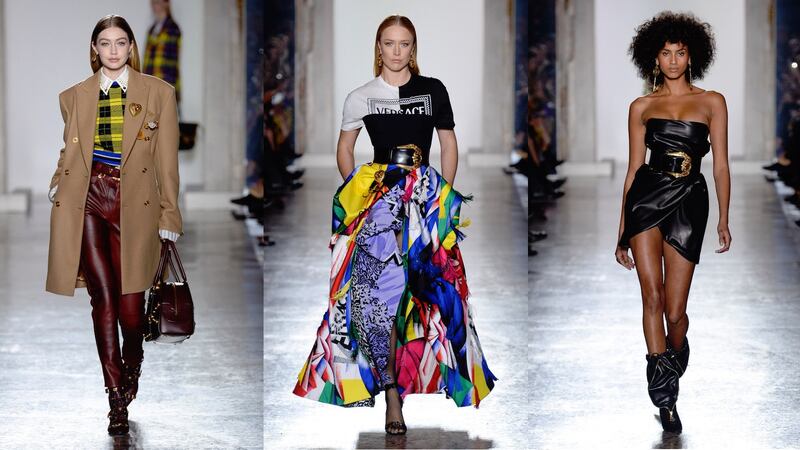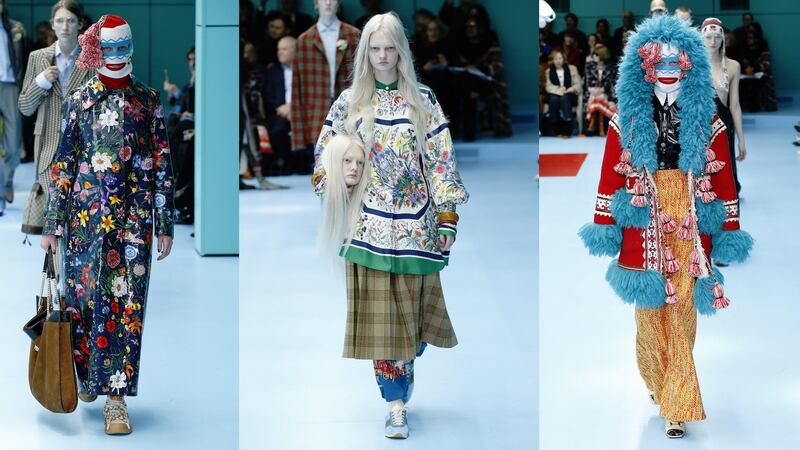
The Business of Fashion
Agenda-setting intelligence, analysis and advice for the global fashion community.

Agenda-setting intelligence, analysis and advice for the global fashion community.

MILAN, Italy — "Never look back, it's all ahead." The sentence was posted to Instagram by MSGM's Massimo Giorgetti after Italian private equity fund Style Capital took a 32 percent stake in the brand earlier this week. But the same words could just as easily have served as a warning to Milan Fashion Week at large.
What's not to agree with? The clean slate on which to write a completely new story is frighteningly exciting. By contrast, nothing is more paralyzing than obsessing over what has been. Of course, fashion often moves forward by looking back, creating the new while constantly digesting the past. Yet, when the past becomes the only source of inspiration, the fashion engine stalls.
The issue was everywhere in Milan, where the weight of the past can be unbearable. Here, history is often a burden. And during the shows, storied houses like Prada were seen redoing their repertoire in the nth variation. Meanwhile, Alberta Ferretti, Krizia and Lorenzo Serafini's Philosophy obsessed over the 1980s without adding much to the conversation.
Moncler founder Remo Ruffini stood out as a futurist with the brand's disruptive "Genius" project. The name — devised in homage to the groundbreaking Genius Group headed in the 1980s by Adriano Goldschmied — might sound a little arrogant. So did the slogan: "The future starts now." Yet it was effective.
ADVERTISEMENT
Ruffini essentially strengthened Moncler's identity by speeding it up and fragmenting it, mirroring the speed and fragmentation of the contemporary landscape. Specifically, the label is replacing its seasonal partnerships with Thom Browne and Giambattista Valli with monthly capsule collections — and accompanying digital content — produced in collaboration with eight guest creatives from across the style spectrum, from the divinely poetic Pierpaolo Piccioli to the wonderfully experimental Craig Green. The idea of creating a republic of excellent minds not only seems to make good business sense but feels inclusive in our divisive times.
There was a time when Italy itself was a republic of incredible fashion minds — all commercial rivals able to cut the cord of history, look ahead and conquer the world with the straightforwardness and credibility of their creations. But this was the heyday of the 1980s and 1990s, a moment that has since become a Paradise Lost to dream about.
It was a telling sign that Milan Fashion Week opened with the vernissage of the exhibition Italiana: Narrating Italian History Through Fashion, 1971-2001. Curators Maria Luisa Frisa and Stefano Tonchi did their best to highlight the essence of the Italian approach to fashion — making beautifully wearable clothes that invariably mirrored the zeitgeist — and made no mystery of the underlying political intention behind the endeavor: showing how things functioned in the past in order to fix the malfunctions of the present.
Despite their good intentions, however, and due in large part to the badly lit, cold set-up, the exhibition, although filled with beautiful pieces and divided into intelligently-defined themes, read as nostalgic rather than progressive. A tad dusty, too. One room, however, stood out: the one dedicated to radical design projects. It did so for the sheer brilliance of the Nanni Strada visions, but also for their enduring modernity. Is it possible to find something as radical and innovative today? Rarely. That was design meant to be both abstract and useful, now it's all about clothes that look great in pictures but cannot be worn for real.

Marni Autumn/ Winter 2018 | Source: InDigital
View Collection
At Marni, Francesco Risso delivered a high-impact collection based on a simple idea. Calling out techno-primitivism, he designed pieces like a caveman or a small child would do: in straight, raw lines, using stiff techno fabric to enforce the concept. It was gloriously uncommercial as it felt visually striking. Oddly, it also felt very Marni in the old Consuelo Castiglioni kind of way, yet still missed that welcoming touch that has defined the label since the inception. In any case, Risso is coming to term with the past, something Italian designers must do en masse.
Italians generally need to find better ways to deal with their creative ancestors and archives. Family businesses — a true Italian signature — often make this kind of change more difficult. Take a house as iconic as Pucci, which is no longer family-owned (LVMH acquired a controlling stake in the label in 2000) though the Pucci family maintain a vested interest. For sure, Emilio Pucci is the only one who really did Pucci right but tapping the archive in a meaningful way requires guts, otherwise it’s just playing it safe. The house urgently needs a creative director with a point of view.
The string of creative directors coming and going at Ferragamo has done no good to the image of the house. The recently installed Paul Andrew and Guillaume Meilland are the first to deliver a cohesive and convincing message — basically, trying to turn Ferragamo into a lively, Italian Hermès — which feels promising and right. One just has to hope the management allows them the time to grow.
ADVERTISEMENT
A family business that still works after so many years is Missoni. Their recipe is simple: they always do the same thing in endlessly different ways. This time around, working around a multi-cultural theme, Angela Missoni delivered one of the best shows of the season, finding new ease along the way.

Versace Autumn/ Winter 2018 | Source: InDigital
View Collection
Donatella Versace moved away from the tribute collection nostalgia of last season whilst still paying homage to Gianni's heritage with a punchy, energetic effort that nonetheless lacked the vastness of scope a house like Versace requires. Versace should be mega. Where's the muscle? The grandeur? The excess?
Amidst all this history, is Italy nurturing the next generation? It is, slowly. It's made of small authors with small means who quite often come across as quite referential but nonetheless have the guts to go solo. People like the purist Lucio Vanotti, the experimentalist Gabriele Colangelo, the architectural Daniele Calcaterra are set for a bright future. Erika Cavallini, too, although she should get rid of her nostalgia for Margiela, or Arthur Arbesser, who would highly benefit from testing his creations on real women in the real world. Are these designers who will make history? Only time will tell. For now, their focus is surviving.

Gucci Autumn/ Winter 2018 | Source: InDigital
View Collection
How can one cope with history anyway without surrendering to it? The Gucci way, of course: a phantasmagoric way of ingesting everything and vomiting it out again, rewriting the curve of time in the process. What the house keeps doing in terms of both fashion output and communication is outstanding and not only because Alessandro Michele keeps exploring, in his trademark high-baroque/hyper-pop way, essential themes such as the construction of identity, with such freedom in taking elements from everywhere and assembling them at his own whims that he invariably fuels the hateful reactions of the internet censors.
Gucci is moving fashion to a whole new level: into the realm of fantasy, the literary and cinematic genre, that is. A head carried on the catwalk by a model is a crazy, probably silly sight, judging with old parameters. So is reproducing Leonardo da Vinci’s “Lady with an Ermine” replacing the ermine with a little dinosaur. Yet, it is something that makes you stop, that provokes a reaction and fuels thought — just a laugh or perhaps more. That's the point in our media-saturated times. Clothes are both products and vectors of thought. Amplifying the message is essential, otherwise a collection is just a bunch of stuff.
Designers in the past made beautiful stuff. Today they need to attach something to it, and to do it honestly. It's a difficult balance, but one that could reconcile the present with the past without history feeling like a burden.
Editor's Note: This article was revised on 26 February, 2018. Due to an editing error, an earlier version of this article misstated that Adriano Goldschmied was a Diesel alum. He was not. In fact, Diesel founder Renzo Rosso was an Adriano Goldschmied alum.
From where aspirational customers are spending to Kering’s challenges and Richemont’s fashion revival, BoF’s editor-in-chief shares key takeaways from conversations with industry insiders in London, Milan and Paris.
BoF editor-at-large Tim Blanks and Imran Amed, BoF founder and editor-in-chief, look back at the key moments of fashion month, from Seán McGirr’s debut at Alexander McQueen to Chemena Kamali’s first collection for Chloé.
Anthony Vaccarello staged a surprise show to launch a collection of gorgeously languid men’s tailoring, writes Tim Blanks.
BoF’s editors pick the best shows of the Autumn/Winter 2024 season.